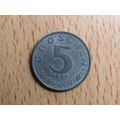Wigan, Gtr Manchester - Mesnes Park - Dennis postcard c.1970s
- Condition : Used
- Dispatch : 2 Days
- Brand : None
- ID# : 180006748
- Quantity : 1 item
- Views : 116
- Location : United Kingdom

- Seller : justthebook (+1703)
- Barcode : None
- Start : Wed 24 Apr 2019 07:17:19 (BST)
- Close : Run Until Sold
- Remain : Run Until Sold
More Listings from This Seller view all
Seller's Description
- Postcard
- Picture / Image: Mesnes Park, Wigan [Greater Manchester]
- Publisher: Dennis (W.028015L)
- Postally used: no
- Stamp: n/a
- Postmark(s): n/a
- Sent to: n/a
- Notes / condition:
Please ask if you need any other information and I will do the best I can to answer.
------------------------------------------------
Postage and packing charge should be showing for your location (contact if not sure).
UK - PayPal, Cheque (from UK bank) or postal order
I will give a full refund if you are not fully satisfied with the postcard.
----------------------------------------------
Wigan (/ˈwɪɡən/ WIG-ən) is a town in Greater Manchester, England, on the River Douglas, 7.9 miles (13 km) south-west of Bolton, 10 miles (16 km) north of Warrington and 16 miles (25.7 km) west-northwest of Manchester. Wigan is the largest settlement in the Metropolitan Borough of Wigan and is its administrative centre. The town has a population of 103,608, whilst the wider borough has a population of 318,100.[1]
Historically in Lancashire, Wigan during classical antiquity was in the territory of the Brigantes, an ancient Celtic tribethat ruled much of what is now northern England. The Brigantes were subjugated in the Roman conquest of Britainduring the 1st century, and it is asserted that the Roman settlement of Coccium was established where Wigan lies. Wigan is believed to have been incorporated as a borough in 1246 following the issue of a charter by King Henry III of England. At the end of the Middle Ages it was one of four boroughs in Lancashire established by Royal charter.
During the Industrial Revolution Wigan experienced dramatic economic expansion and a rapid rise in population. Although porcelain manufacture and clock making had been major industries, Wigan became known as a major mill town and coal mining district. A coal mine was recorded in 1450 and at its peak there were 1,000 pit shafts within 5 miles (8 km) of the town centre.[2] Mining was so extensive that a town councillor remarked that "a coal mine in the backyard was not uncommon in Wigan".[3] Coal mining ceased during the latter part of the 20th century.
Wigan Pier, a wharf on the Leeds and Liverpool Canal, was made famous by the writer George Orwell. In his book, The Road to Wigan Pier, Orwell highlighted the poor working and living conditions of the inhabitants during the 1930s. Following the decline of heavy industry in the region, Wigan Pier's warehouses and wharfs became a local heritage centre and cultural quarter. The DW Stadium is home to Wigan Athletic Football Club and Wigan Warriors Rugby League Football Club.
Mesnes Park (English: /ˈmeɪnz
The elongated 12 hectares (30 acres) park lies to the north-west of Wigan town centre with its main entrance at the junction of Bridgeman Terrace and Mesnes Park Terrace. It comprises formal flower beds in grass lawns, a pool, childrens' playgrounds, mini golf, sports grounds and a café.
It has recently undergone a multi-million pound restoration after receiving a grant from the Heritage Lottery Fund.
The park itself is Grade II listed and contains a total of seven original Grade II listed features.[1]
The main entrance gateway has carved sandstone piers and double cast iron gates with the Wigan town shield and the date of 1878.[2]
The associated entrance lodge has been refurbished and is used for meetings and weddings.[3]
On the right hand side of the main path (from the entrance to the main Pavilion feature) is the bronze statue of former local MP and benefactor Sir Francis Sharpe Powell.[4] Touching his bronze foot is said to bring good luck.
At the end of the main path is the south-east double flight of sandstone steps up to the Pavilion.[5] At the top of the steps stands a memorial to the soldiers of the Boer War.
The Pavilion is the main feature of the park, with a cafė and two floors of seating.[6] The structure is constructed to an octagonal plan in cast iron, clad on the outside with brick and terracotta tiling.
A second double fight of steps, similar to the south-east flight, leads down from the south-west side of the Pavilion.[7]
The 10-sided bandstand made of cast iron columns with a metal-clad wooden roof has been recently provided with electric power.[8]
Listing Information
| Listing Type | Gallery Listing |
| Listing ID# | 180006748 |
| Start Time | Wed 24 Apr 2019 07:17:19 (BST) |
| Close Time | Run Until Sold |
| Starting Bid | Fixed Price (no bidding) |
| Item Condition | Used |
| Bids | 0 |
| Views | 116 |
| Dispatch Time | 2 Days |
| Quantity | 1 |
| Location | United Kingdom |
| Auto Extend | No |




 for 1 item(s)
for 1 item(s)
















